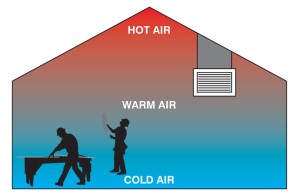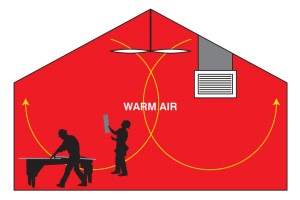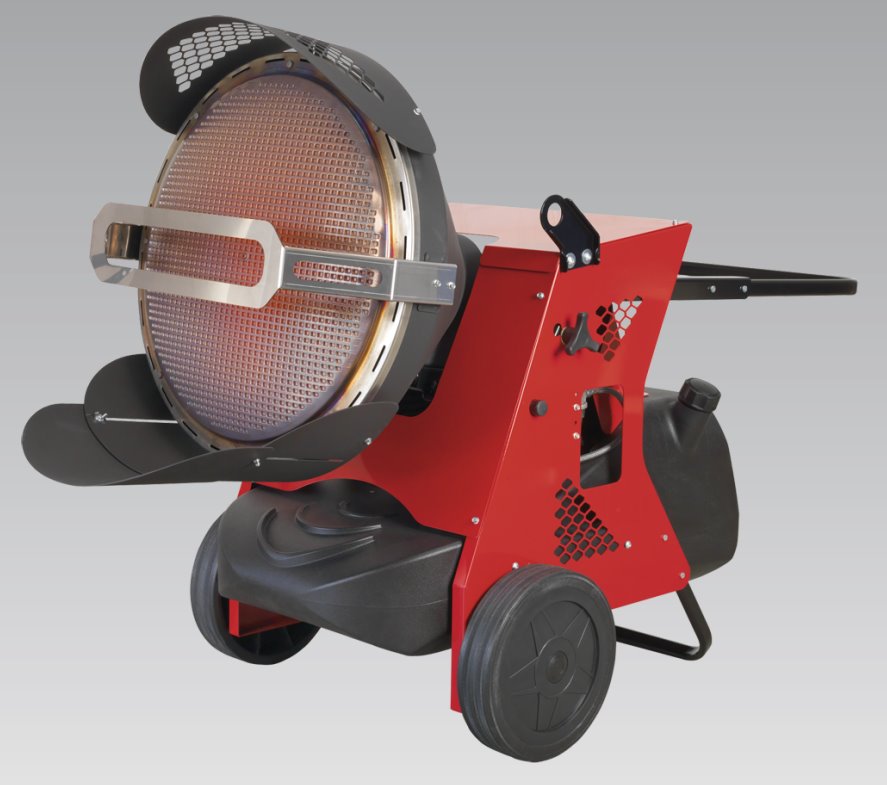A Brief Guide to Radiant Heating
What is radiant heating?
Space heating is where heaters heat up the air, radiant heaters on the otherhand warm objects.
The clearest illustration of that is to imagine the contrast between the felt temperature during early morning in the shade and then when you walk into the gaze of the sun. The air temperature is actually quite cold and will feel cold in the shade but the air temperature might be slightly warmer in the sun but actually feels much warmer. Continuing the illustration, as the day progresses warmth spreads and increases as the buildings and ground are heated by the sun, and the warmer surfaces make for more 'felt warmth'. Also imagine a bright sunny day with a cold wind, when out of the wind you will feel significantly warmer as the heat from the sun has its effect. Heat from the sun is radiant heat.
Radiant heaters deliver heat in the same way as the sun, and the characteristics are similar too. Like the sun there is heat shade where the heaters are obscured by other objects and like the sun the surfaces in the gaze of the heaters, heat up and then themselves radiant a lower intensity of heat. Radiant heaters have limited power and depending on their type and power they have limited range, and the further the object is from the heater then the less warmth is experienced.
Radiant heating systems
Given the range of a radiant heater the principle design task in planning a radiant heating system is to develop an array of heaters that are mounted at the optimum height and spacing, in order to get even and sufficient 'experienced' warmth, without hot spots or cool spots. With the design of radiant heating array established, the focus can then move to zoning and controls.
Advantages of radiant heating
In comparison to space heaters, there are a number of advantages to radiant heating;
-
Quick warm up times. Generally the heaters get to full heat output within a minute or two, and the experienced effect is as quick. It then takes a little longer for the surfaces in range to warm up.
-
Efficient in large spaces. Often in large buildings only part of the available space actually needs to be heated. With radiant heating you can easily have zones and only heat particular zones if and when required. Space heating in contrast requires all the air in the space to be heated in order to warm the area where the warmth is required.
-
Delivery of heat is directional. This means that heat is delivered to where is its needed, so instead of warmed air rising to the roof, heat is projected to the occupied areas. Heated air rising to the ceiling is wasted energy.


Space heating can be inefficient
and ineffective in large spacesRadiant heating is efficient
and effective in large spaces -
Very quick and responsive control. Because radiant heating has such quick warm up times and can be controlled in zones even in a large open plan area, it means that thermostatic control can be very sensitive and react very quick to correct fluctuations in temperature. It is this sensitivity and speed of adjustment that enables the power usage to be so closely matched to heating requirements.
-
A credible source of heating for outdoors. Space heating relies on containment of heated air so by default does not work outside. Radiant heating does and as long as the heaters are suited to the external environment and sized to the application then it will be a workable solution. Radiant heating can even be used for warming the spectators at sporting stadiums.
Types of Radiant Heating
Radiant heaters can be separated by their fuel type;
| Electric. There is a wide range of options for radiant heaters powered by electricity and these are generally the most straight forward to use and/or install. The capability and options increase dramatically when there is 3 phase power available for an installation which means that its no surprise that in industrial applications electric radiant heating is a strong contender. 230v systems in contrast are very limited both in individual size of heaters and also in the capacity for existing circuits to handle an array of heaters. | |
| Gas. The smallest gas radiant heaters are mobile cabinet heaters running from a bottle of gas, but more powerful 'uninstalled' systems usually run on mains gas. Gas plaque heaters work in the same way as the small cabinet heaters in that the gas is burned on a perforated ceramic tile backed by a reflector which direct radiant heat to where needed. Plaque heaters are usually either rectangular or conical. Radiant gas tube heaters use a gas flame contained in a steel tube to which in turn radiates heat | |
| Water. Heated water carried via pipework is used to feed radiant panels. It is tempting to think of radiant panels as being like conventional radiators, but actually they are a bit different. Where a radiator is a long flat tank of water designed to heat by convection of passing air, a radiant panel is a pattern of thin pipework sandwiched between a heat transfer surface and an insulation layer. It means that they are much lighter than radiators and designed to emit radiant heat from one surface only. | |
 | Oil. A small number of products that are mobile radiant heaters supplied mainly for site work run on diesel. The principle is that a convex perforated steel screen is heated by a burner, and the orange or black heated steel in the screen provides a radiant heat |
There is much more infomation on radiant heating in the following pages.
Space Heating or Radiant Heating
For more information on particular radiant heaters, their applications and controls please consult the other information pages in this section or phone us for help 01729824108
